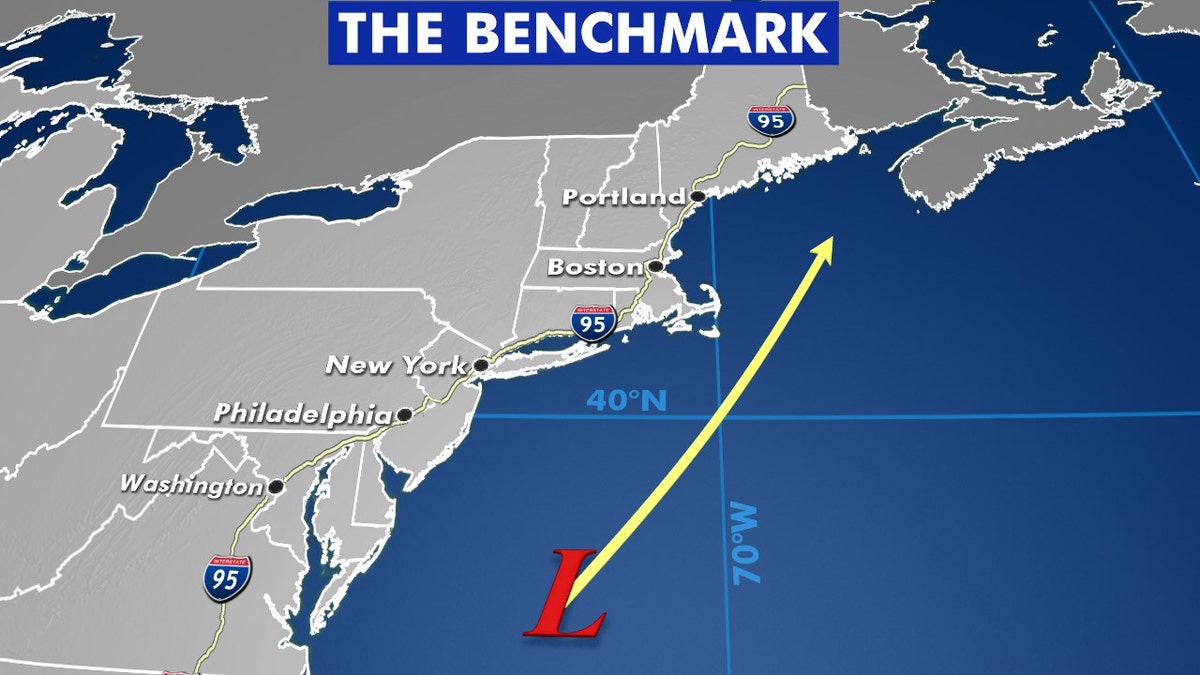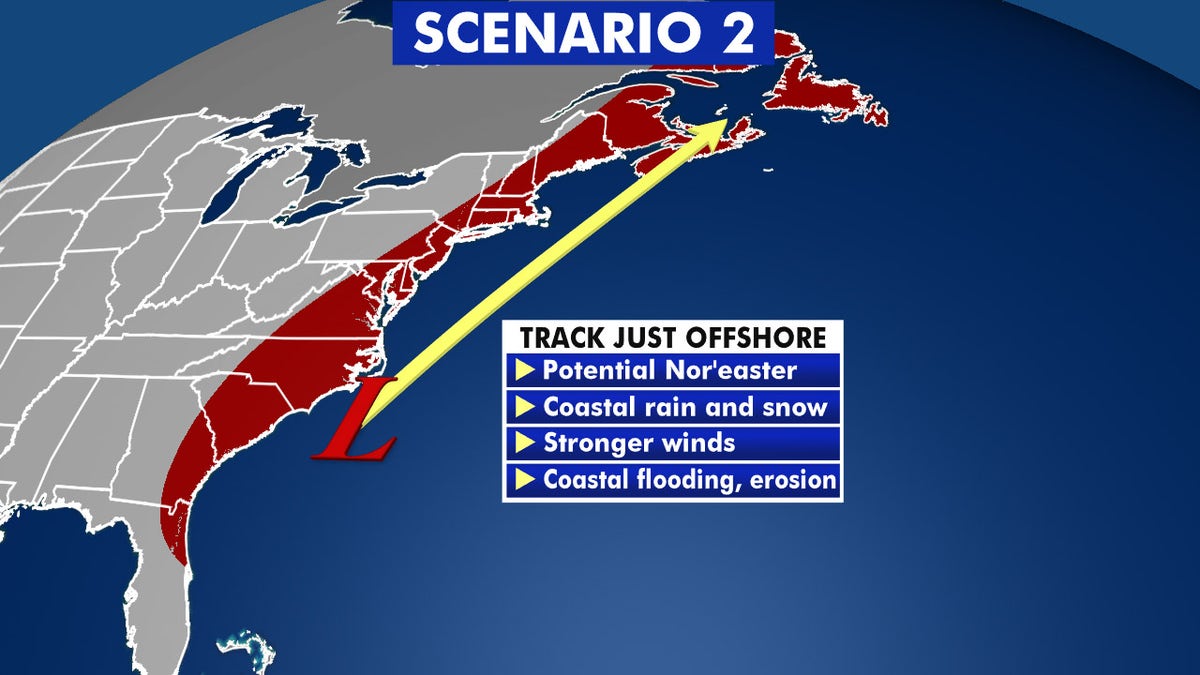Will a nor'easter bring snow? How different storm tracks impact the Northeast
What type of nor’easter could you see in your area? Here are the three main types.
When it comes to figure out if the infamous winter storms known as nor'easters will bring heavy snow to major cities in the Northeast, it's all about location.
A nor'easter is a strong low-pressure system that affects the Mid-Atlantic, the Northeast and New England. Well-developed nor'easters are notorious for producing heavy snow, rain, wind, coastal flooding and very rough surf.
The name comes from the continuously strong northeasterly winds that precede the nor'easter.
WHAT IS A NOR'EASTER? THE CLASSIC EAST COAST STORMS EXPLAINED
Assuming there is enough cold air in place across the Northeast, the exact track of a nor’easter becomes critical for precipitation type and snow totals.

Nor’easters are responsible for the biggest snowstorms on record from the Mid-Atlantic to New England. (Fox News)
What is known as “The Benchmark” that meteorologists refer to when trying to figure out what the storms may bring is actually specific latitude/longitude coordinates: 40 degrees North, 70 degrees West.

The key location for nor'easters to bring heavy snow to big cities in the Northeast. (Fox News)
Major nor’easters that pass near or over "The Benchmark" can deliver the heaviest snow to the I-95 corridor.
WILL A NOR'EASTER BRING SNOW? HOW DIFFERENT STORM TRACKS IMPACT THE NORTHEAST
Storms that track significantly west of these coordinates usually bring mixed precipitation, with much warmer air/rain in at the coast, while tracks farther out to sea keep the heaviest precipitation offshore.
CLICK HERE FOR MORE WEATHER COVERAGE FROM FOX NEWS
When nor'easters reach "The Benchmark," the just-offshore track can bring monster, full-blown storms, especially when enough cold air is involved and deep strengthening occurs. Snow can be measured in feet, especially along the Interstate 95 corridor if the atmosphere is cold enough.
If temperatures are warmer, you'll often hear about a rain-snow line, and snow changing to rain, then back to snow sometimes.

Nor'easters that track just off the coast can bring heavy snow to the major cities along the Interstate 95 corridor. (Fox News)
Just a few miles east or west can mean the difference between 2 feet of snow, or a few inches and mostly rain.
Prolonged northeasterly winds also bring a significant coastal flooding threat and beach erosion.


